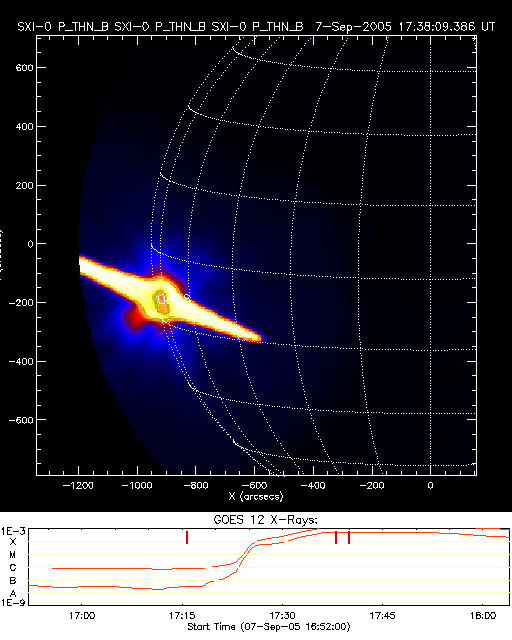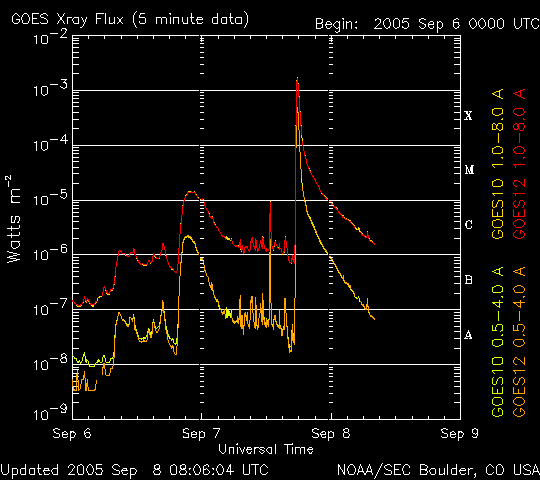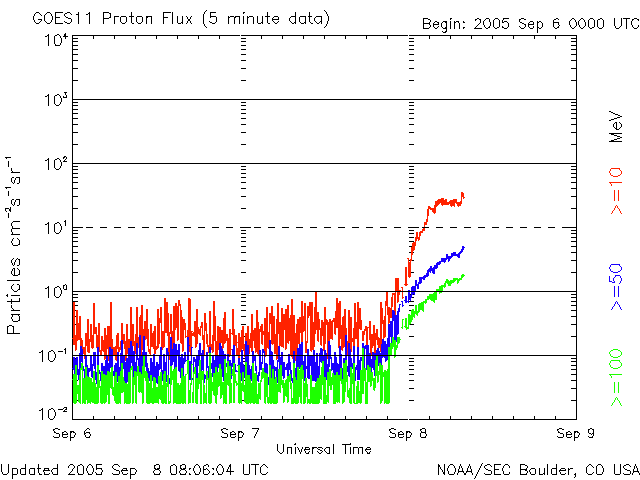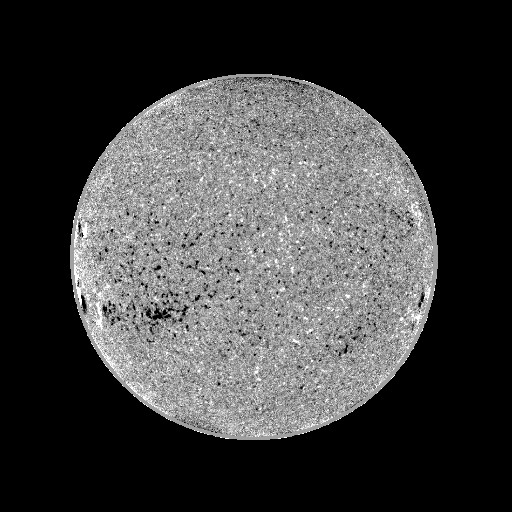Yesterday, September 7, the GOES satellite detected a strongly enhanced x-ray flux. The curve went up to X17, the saturation level of the satellite! In the ranks, this is the fourth biggest flare since 1976 according to IPS.
SXI, the Solar X-ray Imager onboard of GOES, 'saw' the flare. (For a movie, see below) It came from the eastern side of the solar disk. The source group that was probably responsible for several backsided coronal mass ejections (CMEs) last week, was baptized yesterday as 37 (Catania) and 0808 (NOAA). Unfortunately, LASCO and EIT, instruments that visualize the Sun and the surroundings and fly on SOHO, were not available. This makes it difficult to make any estimation about the associated CME. But, due to the position of the sunspot group, we know that it is mainly east-directed. At the moment, there is also a proton-event ongoing (plot below). The flux increase was mainly initiated by the CME as the form of the curve shows. The curve increased gradually. If the protons were accelerated by the flare itself, the curve would be very steep.

The figure above is made of pictures taken with SXI: it shows the difference between 2 pictures so we call it a difference image. It shows what has changed with respect to the previous picture. The flare is clearly visible. Underneath it, the X-ray flux curve as measured by GOES is plotted: you see that the saturation level is reached. GOES cannot take more.
GONG, a network of earth based solar observatories, shows in their magnetograms a glimpse of the group and it looks certainly a promising group. See beneath for a picture. We are still expecting more activity and stronger consequences as the group will rotate to the center of the disk. Stay tuned!!

GOES x-ray

SXI movie

proton event

Magnetogram from GONG
This text is also available in Nederlands / Français.





